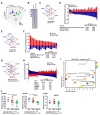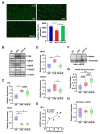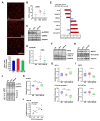Resveratrol supplementation confers neuroprotection in cortical brain tissue of nonhuman primates fed a high-fat/sucrose diet
- PMID: 27070252
- PMCID: PMC4931843
- DOI: 10.18632/aging.100942
Resveratrol supplementation confers neuroprotection in cortical brain tissue of nonhuman primates fed a high-fat/sucrose diet
Abstract
Previous studies have shown positive effects of long-term resveratrol (RSV) supplementation in preventing pancreatic beta cell dysfunction, arterial stiffening and metabolic decline induced by high-fat/high-sugar (HFS) diet in nonhuman primates. Here, the analysis was extended to examine whether RSV may reduce dietary stress toxicity in the cerebral cortex of the same cohort of treated animals. Middle-aged male rhesus monkeys were fed for 2 years with HFS alone or combined with RSV, after which whole-genome microarray analysis of cerebral cortex tissue was carried out along with ELISA, immunofluorescence, and biochemical analyses to examine markers of vascular health and inflammation in the cerebral cortices. A number of genes and pathways that were differentially modulated in these dietary interventions indicated an exacerbation of neuroinflammation (e.g., oxidative stress markers, apoptosis, NF-κB activation) in HFS-fed animals and protection by RSV treatment. The decreased expression of mitochondrial aldehyde dehydrogenase 2, dysregulation in endothelial nitric oxide synthase, and reduced capillary density induced by HFS stress were rescued by RSV supplementation. Our results suggest that long-term RSV treatment confers neuroprotection against cerebral vascular dysfunction during nutrient stress.
Keywords: Rhesus monkeys; brain vasculature; cDNA microarray; endothelial nitric oxide synthase; inflammation.
Conflict of interest statement
The authors declare that they have no competing financial interest.
Figures




References
-
- Cawley J, Meyerhoefer C. The medical care costs of obesity: An instrumental variables approach. Journal of Health Economics. 2012;31:219–230. - PubMed
-
- Whitmer R, Gunderson E, Quesenberry C, Zhou J, Yaffe K. Body Mass Index in Midlife and Risk of Alzheimer Disease and Vascular Dementia. Current Alzheimer Research. 2007;4:103–109. - PubMed
MeSH terms
Substances
Grants and funding
LinkOut - more resources
Full Text Sources
Other Literature Sources
Molecular Biology Databases

